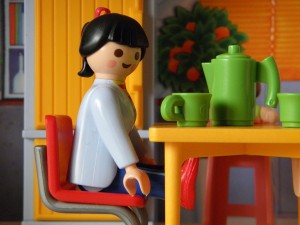Facebook toy advertisements are less sexist than TV advertisements

Christmas toy campaigns usually strengthen gender roles. Acording to an investigation by Universidad Internacional de La Rioja (UNIR), this kind of advertising in new platforms like Facebook contains less gender stereotypes than the detected in conventional media.
Media and advertising have a crucial role in girls and boys socialization from earlier ages. That is why, step by step, society is starting to reject toys that strengthen gender stereotypes and usually invade catalogue in strong sale seasons like Christmas. Up to now, many studies have been made to analyze advertising in traditional media (papers, TV and radio). All of them point that pictures and characterization made in publicity usually increase diferences between girls and boys, since kids have a limited ability to evaluate the credibility of the received news.
Nevertheless, compsuntion habits are changing; researchers have not paid enough attention to a very popular dissemination platform: social networks. According a study about kids, toys and Internet (Asociacion Española de Fabricantes de Juguetes, The Cocktail Analysis and IAB Spain, 2012), 64% of parents with 0-12 year old kids check on the Internet before buying them toys. What happens with this new way of produce and disseminate advertising? Have they become an innovation just because its form, or also because its content? Bidirectionality has change anything?
Researchers Jesus Diaz-Campo and Erika Fernandez, from Universidad Internacional de La Rioja (UNIR) have answered this and other questions with their study Estereotipos de género y socialización del menor: La publicidad de juguetes a través de Facebook en España, recently published by OBS Journal. UNIR experts have analyzed published messages by main toy brands in Facebook in 2015 Christmas campaing. They have paid attention to the message aim, toys type, kids gender, use of voice, adult roles if they have any, and interaction type. Sample studied 479 posted messages by six brands from Asociacion Española de Fabricantes de Juguetes (AEFJ): Famosa, Playmobil, Comansi, Hasbro, Barbie y Fisher Price.

Numbers point at interesting results. In the doll and accesories categories, and action toys, it has been observed more presence of traditional gender roles. But total data seems to show an increasing sensitization about their own publications. Stereotypes are less usual in this kind of advertising than other studies detected in TV spots. This will positively affect the socialization process of kids. In the same way, researchers have found a large number of friendly interaction, even analyzing action toys from Comansi or Playmobil.
Results are inspiring, but it is needed to go on in this investigation in order to analyze the time evolution, same as done with TV, and prove if this limited presence of stereotypes mantains. As researchers say, it is also needed deeper studies about this new form of advertising against gender stereotypes, because equality shouldn’t be a trend, but a social goal.
Referencia bibliográfica:
Díaz-Campo, Jesús; Fernández Gómez, Erika. Estereotipos de género y socialización del menor. La publicidad de juguetes a través de Facebook en España. Observatorio (OBS) Journal (2017), Vol 11, nº 3. Recuperado en http://obs.obercom.pt/index.php/obs/article/view/923/pdf
October, 9th.- Eva Ferreras
